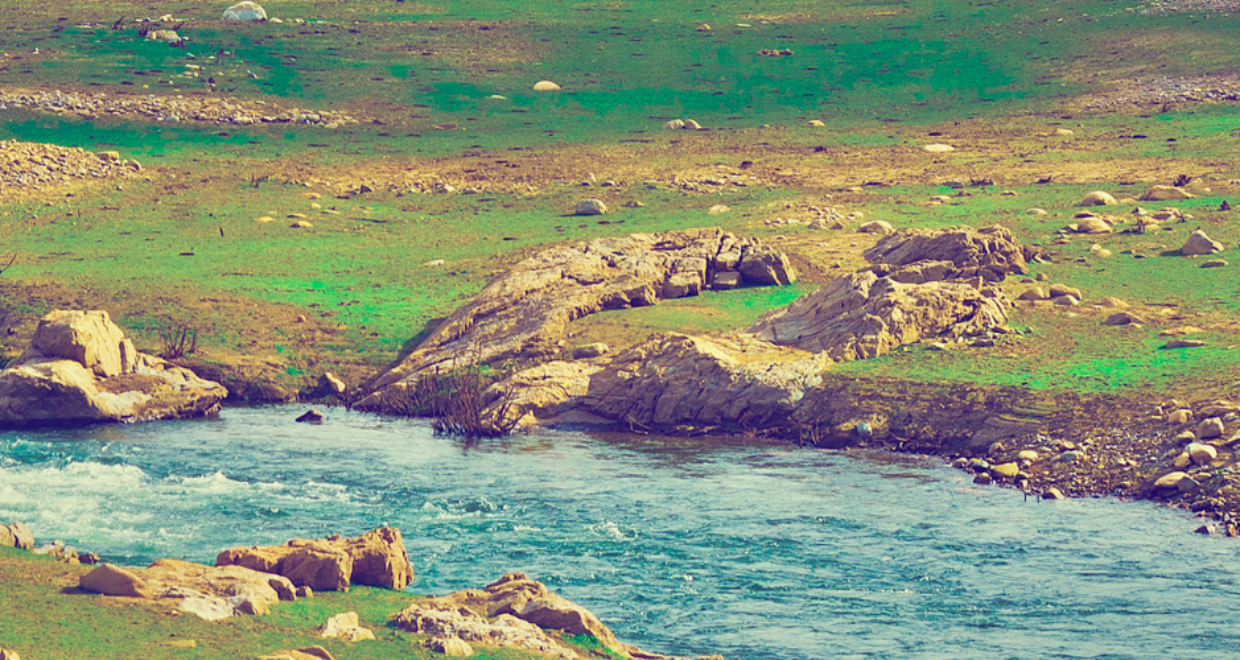When the Levee Forms
Blues fans out there may be familiar with the Led Zeppelin classic ‘When the Levee Breaks’, but what about when the levee forms? In particular, how do natural levees form in such an organised and well-engineered process?

People have been building and reinforcing river banks to direct the flow of water for thousands of years, but nature has been building these structures, known as levees, for as long as debris and granular material has been flowing. All manner of strategies for building permanent and temporary levees have been developed over human history. During emergencies, sandbags can be piled along shorelines at risk of flooding, and in populated areas prone to frequent flooding, permanent levees may be erected. It may seem odd that these purpose-built structures would also form in nature, yet, they appear in all manner of situations; whether the flow happens along an already-carved river bed, or in above-ground avalanches of debris, flows of material seem to consistently carve and carry sediment in ways that reinforce forward motion while minimising lateral spreading. That’s the general idea at least, but the specifics – like how rocky debris seems to sort itself according to size in certain areas of a natural levee (with large, coarse grains to the front and along the banks) but mix in others (with a diverse mix of sizes deposited in the deep, central channel that spans the length of the flow as shown in Figure 1) remains only partially understood.

Recently, researchers from Manchester, Liverpool and Marseille set out to expand our understanding of how these natural structures form. The study attempts to combine a collection of idealised models into a framework that pushes significantly closer to realism than previous work. Before moving onto the ultimate goal of a 3-dimensional description for debris sorting in a levee-bound channel, the authors begin with a 2-dimensional mono-disperse flow model following the lead of Rocha et al. (also published in JFM). Despite being a dry, mono-disperse flow, Rocha et al. showed how natural levees form along the banks of the flow with continuous deposition of grains, whilst also resisting lateral spreading and reinforcing the forward-motion of the debris. Like painting with a wide, thick brush, this first step describes the velocity of the fluid averaged over the depth of the debris, an example of which is shown in Figure 2. This approximation gives a good sense of the total amount of material that moves over time, but does not allow the speed of material at the top of the flow to be compared to the bottom. This is refined by adding a flow profile which assumes debris at the bottom of the flow will move much slower than the debris at the top, though the authors note many other flow profiles can be inserted here to better reflect specific scenarios (for example plug flow, where the bottom layers move at nearly the same speed as the top, in much the same way as a cork being pulled out of a bottle).

At this point, the model can begin to describe the trajectories of actual particles within the flow, which the study treats as a bi-disperse mixture of two sizes – small and large. Notably, the researchers observe that larger particles seem to rise to the top of the flow, which travels at a higher velocity than the particles lower down. This has the effect of pushing the boulder-like pieces to the front of the advancing debris field. However, outpacing the bulk of material means the larger particles will cascade over the front of the flow, at which point they can be overtaken by the rest of the material. From here, the large particles are in a position to rise to the surface again, repeating their tumbling, undulating journey. But this is just one path that the large particles can take. Depending on where in the bulk a large particle begins, they may eventually exit this recirculation loop by being pushed outwards to the sides of the flow where they can be deposited. Both of these paths, taken together, provide an explanation for the strange yet organised structures described in Figure 1 and observed all over the world.
While this paper added complexity and nuance to previous models of debris flows, it still does not incorporate every possible detail. Geological flows are typically made up of many more than two sizes of particles, and this realism introduces considerable complexity to the task of modelling. However, a good model is often recognised by its ability to identify and include the crucial elements of a system, whilst attempting to reduce its complexity. Here, the authors find a simplified case with two different sizes of particles can still provide valuable insight into more complicated, real-world scenarios. In particular, self-channelling was shown to occur regardless of whether particles were of one or variable sizes, suggesting a dependence on friction and viscosity-based arguments. Likewise, self-channelling and size segregation could occur with or without a carrier fluid. The authors also identify that the results depend on the relative sizes of particles in the flow, meaning that this study should equally well describe lab-scale experiments and large, geological phenomena. Finally, the authors argue that their results provide evidence and support to the hypothesis that self-channelling phenomena, such as the way material self-organises by size, are independent of variable particle sizes. And in particular, higher concentrations of large particles in naturally forming levees may enhance the strength of these structures. Further investigations into the role of particle-size segregation, including more diverse particle sizes, may yet uncover even more accurate and predictive models that are better able to explain some of the incredible structures found in nature.
Article Title: Particle-size segregation in self-channelized granular flows
Authors: A.N. Edwards, F.M. Rocha, B.P. Kokelaar, C.G. Johnson, and J.M.N.T. Gray







